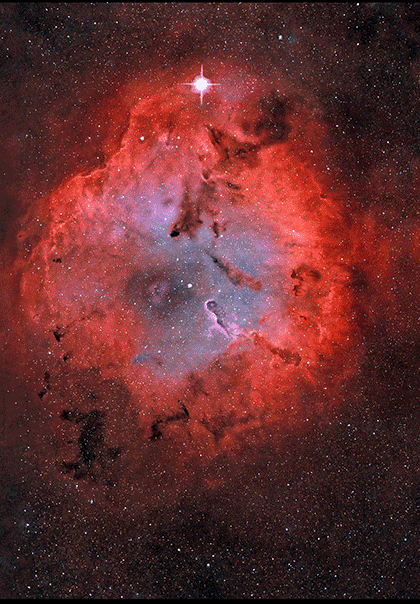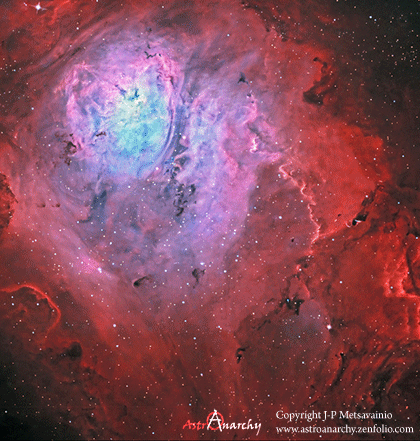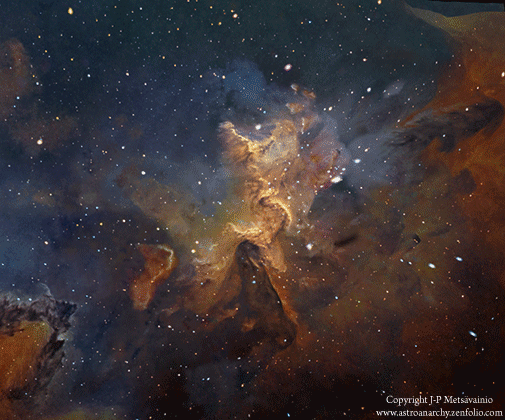That's a camera lighting artifact. The Moon would be overexposed and blurry (like the stars) if it was in the shot.everyone notice the moon in that shot?
-
Hey Guest. Check out your NeoGAF Wrapped 2025 results here!
You are using an out of date browser. It may not display this or other websites correctly.
You should upgrade or use an alternative browser.
You should upgrade or use an alternative browser.
Space: The Final Frontier
- Thread starter Windu
- Start date
Goodacre0081
Member
That's a camera lighting artifact. The Moon would be overexposed and blurry (like the stars) if it was in the shot.
WeAreStarStuff
Member
shuttle launch
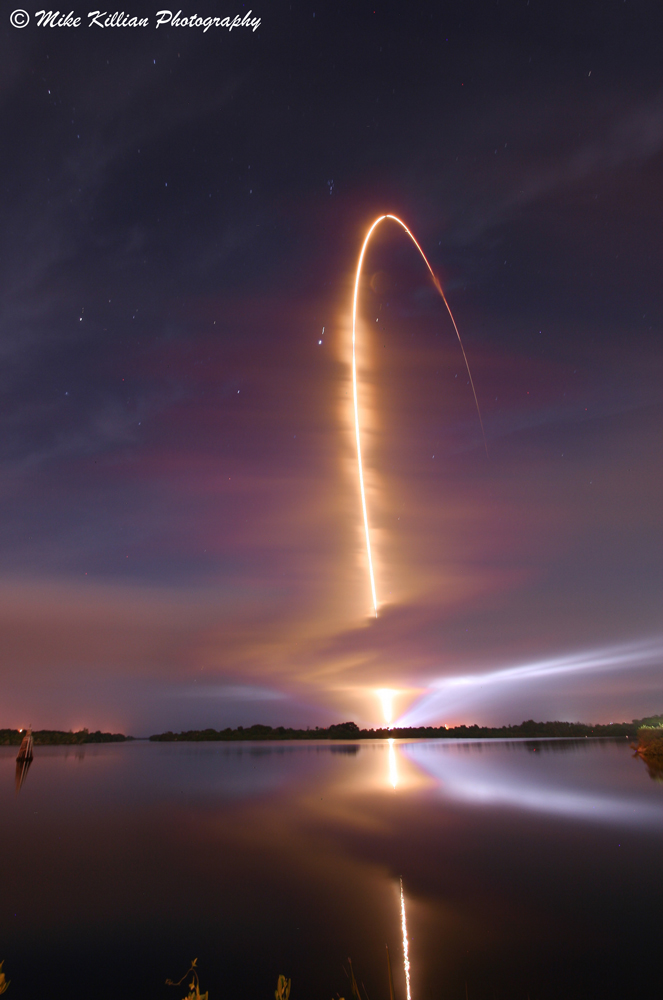
Fantastic.
abstract alien
Member
One of these days, something like this will happen and it will change humanity forever. Just a matter if time.
Escape Goat
Member
Mars Rover Spots Metallic 'Arm' Sticking Out Of A Rock
[MG]http://i.huffpost.com/gen/979389/thumbs/o-8441458081_9F48BAAB8B_O-570.jpg?6[/IMG]
[IG]http://i.huffpost.com/gen/979389/thumbs/r-8441458081_9F48BAAB8B_O-large570.jpg?6[/MG]

lilbaby Jesus
Member
Wow so this is real?? Not photoshopped?
Schrade
Member
shuttle launch

This picture just took my breath away. Such absolute beauty...
I want this on a wall.
It could be one of three things:
1) the formation of ioxide from the lighting bolt impact
2) a metal based alien plant or bacteria formation
3) highly polished surface
I'd say it's 99% 1).
Maklershed
Member
Looks like a little t-rex. Although I guess only the top 1/4th is the metal object and the bottom is some kind of shadow. So NASA isnt just gonna let the rover roll away and be like "well that metal arm will always be a mystery" will they? I'm hoping they go get a better angle for pictures or do some kind of chemical analysis.
EDIT: Looks like we might be able to see a comet with the naked eye in early March ...
http://phys.org/news/2013-02-naked-eye-comet.html
EDIT: Looks like we might be able to see a comet with the naked eye in early March ...
http://phys.org/news/2013-02-naked-eye-comet.html
Captain Knutsman
Member
"Will comet ISON fizzle or sizzle?"
We won't know fo shizzle
We won't know fo shizzle
Thug Waffle
Member
So when is NASA going to launch a kickstarter? They'll probably get more from that than their annual funding.
Seriously, that would make too much sense.
There's probably some rules against government agencies taking that route to acquire funding or something. If there's not, I don't know what the hell they're thinking by not seizing such an opportunity.
Elfforkusu
Member
IIRC, this is indeed the case.Seriously, that would make too much sense.
There's probably some rules against government agencies taking that route to acquire funding or something. If there's not, I don't know what the hell they're thinking by not seizing such an opportunity.
Congress could pass a law changing this, but their priorities lie elsewhere.
WeAreStarStuff
Member
IIRC, this is indeed the case.
Congress could pass a law changing this, but their priorities lie elsewhere.
Does anyone know anything more about this?
Partial Gamification
Banned
Does anyone know anything more about this?
Two articles, one comparing NSF versus Kickstarter
another just before SOTU
There was a panel discussion after the SOTU, I was half-listening so I cannot confirm the topic was raise.
Obama is doing his reponses this afternoon to submitted questions,, it might come up.
It seems like an idea out in the aether, at the momement.
WeAreStarStuff
Member
Two articles, one comparing NSF versus Kickstarter
another just before SOTU
There was a panel discussion after the SOTU, I was half-listening so I cannot confirm the topic was raise.
Obama is doing his reponses this afternoon to submitted questions,, it might come up.
It seems like an idea out in the aether, at the momement.
Thank you for this kind sir. This seems to be the crux of the problem I was trying to understand; from your first link:
Kickstarter is not trying to fund basic research. It is trying to fund creativity.
Partial Gamification
Banned
Thank you for this kind sir. This seems to be the crux of the problem I was trying to understand; from your first link:
No problem, I had another thought on way way out and think Science Friday might bring this up tomorrow. Didn't find an unpcoming schedule; they are likely talking about the upcoming near-miss (count-down timer at Sci Fri homepage) [as well].
FYI:
http://www.jpl.nasa.gov/asteroidwatch/newsfeatures.cfm?release=2013-059
PASADENA, Calif. -- NASA Television will provide commentary starting at 11 a.m. PST (2 p.m. EST) on Friday, Feb. 15, during the close, but safe, flyby of a small near-Earth asteroid named 2012 DA14. NASA places a high priority on tracking asteroids and protecting our home planet from them. This flyby will provide a unique opportunity for researchers to study a near-Earth object up close.
The half-hour broadcast from NASA's Jet Propulsion Laboratory in Pasadena, Calif., will incorporate real-time animation to show the location of the asteroid in relation to Earth, along with live or near real-time views of the asteroid from observatories in Australia, weather permitting.
At the time of its closest approach to Earth at approximately 11:25 a.m. PST (2:25 p.m. EST / 19:25 UTC), the asteroid will be about 17,150 miles (27,600 kilometers) above Earth's surface.
The commentary will be available via NASA TV and streamed live online at:
http://www.nasa.gov/ntv
http://www.ustream.tv/nasajpl2
The half-hour broadcast from NASA's Jet Propulsion Laboratory in Pasadena, Calif., will incorporate real-time animation to show the location of the asteroid in relation to Earth, along with live or near real-time views of the asteroid from observatories in Australia, weather permitting.
At the time of its closest approach to Earth at approximately 11:25 a.m. PST (2:25 p.m. EST / 19:25 UTC), the asteroid will be about 17,150 miles (27,600 kilometers) above Earth's surface.
The commentary will be available via NASA TV and streamed live online at:
http://www.nasa.gov/ntv
http://www.ustream.tv/nasajpl2
http://www.jpl.nasa.gov/asteroidwatch/newsfeatures.cfm?release=2013-059
Thug Waffle
Member
Kickstarter is not trying to fund basic research. It is trying to fund creativity.
Because devising a way to get human beings on Mars isn't creative. Nope.
Kickstarter can fund R&D for gaming hardware, but not spacefaring hardware. Makessense.jpg.nope.gif
Since folks are talking about kickstarter in the space thread, I thought I'd mention that the National Space Society has a video kickstarter that's down to its last day and a half, working on stretch goals. A few thousand dollars more and they send copies to Congress, the Cabinet, and the President--where they will probably go unwatched, but I support the gesture anyway.
orientalNoodle
Banned
Love this thread!
A quick question. Might sound silly but what is the colour of the Milky Way? Ive seen it pictured and looks red to me. Yet, in various drawings and on tv, film etc its depicted as being blue.
It looks grey to me.
Goodacre0081
Member
I think the varying contrasts are due to the atmosphere, time of day, time of year and location. it's weird to think about the fact we can see other galaxies and their orientation but we'll never have a true outside look at ours. although seeing the galactic plane is absolutely amazing in itself.
bonus image: how about the milky way during aurora borealis? it's green!
Goodacre0081
Member
FO-totality
Poet Centuriate
Because devising a way to get human beings on Mars isn't creative. Nope.
Kickstarter can fund R&D for gaming hardware, but not spacefaring hardware. Makessense.jpg.nope.gif
Found these for you:
http://www.kickstarter.com/projects/880837561/skycube-the-first-satellite-launched-by-you
http://www.kickstarter.com/projects/zacinaction/kicksat-your-personal-spacecraft-in-space
http://en.wikipedia.org/wiki/KickSat
http://www.kickstarter.com/projects/575960623/ardusat-your-arduino-experiment-in-space
Insane Metal
Member
Awesome! Saw that on the news!
Holy shit, this video is better: http://www.youtube.com/watch?v=P-Q90c07jn0
Another one http://www.youtube.com/watch?v=rcLvE8blJcU
WeAreStarStuff
Member
Amazing; would love to see with my own eyes.
I knew our star would go Red Giant on us and destroy the Earth, but this picture really puts it in persepctive; I never realized just how much more massive it will grow.
Thug Waffle
Member
Found these for you:
http://www.kickstarter.com/projects/880837561/skycube-the-first-satellite-launched-by-you
http://www.kickstarter.com/projects/zacinaction/kicksat-your-personal-spacecraft-in-space
http://en.wikipedia.org/wiki/KickSat
http://www.kickstarter.com/projects/575960623/ardusat-your-arduino-experiment-in-space
See, now this is cool. If NASA were allowed to take advantage of this platform, a combination of publicity and reputation would surely raise ridiculous funds.
Dice
Pokémon Parentage Conspiracy Theorist
Makes sense, I guess. They aren't called Red Slightly-Biggers.I knew our star would go Red Giant on us and destroy the Earth, but this picture really puts it in persepctive; I never realized just how much more massive it will grow.
I think the varying contrasts are due to the atmosphere, time of day, time of year and location. it's weird to think about the fact we can see other galaxies and their orientation but we'll never have a true outside look at ours. although seeing the galactic plane is absolutely amazing in itself.
bonus image: how about the milky way during aurora borealis? it's green!
Amazing pics.
orientalNoodle
Banned
Amazing; would love to see with my own eyes.
I knew our star would go Red Giant on us and destroy the Earth, but this picture really puts it in persepctive; I never realized just how much more massive it will grow.
Not more massive. It's mass will be less than today actually. Just bigger and less dense.
I laughed at the headline, jesus three shooting stars!
http://www.theverge.com/2013/2/16/3...-california-skies-three-shooting-stars-in-one
I mean it's bad what happened in russia, but come on...
http://www.theverge.com/2013/2/16/3...-california-skies-three-shooting-stars-in-one
I mean it's bad what happened in russia, but come on...
Isn't NASA hosting a press conference about rock interiors today?
What rocks? Mars rocks, space rocks or what?
Apparently NASA has found a really small planet, barely larger than Earth's Moon.
http://en.wikipedia.org/wiki/Kepler-37b
Ability to detect small planets is a welcome ability, easier to hunt for Earth-like planets.
http://en.wikipedia.org/wiki/Kepler-37b
Ability to detect small planets is a welcome ability, easier to hunt for Earth-like planets.
Partial Gamification
Banned
I might have missed a thread on this stuff but I'm putting this here anyway.
edit: announcement info:
Despite the widespread poverty in India, a nation with more than 1 billion residents, India started its space exploration programme way back in 1962. Five years ago, India's Chandrayaan satellite discovered evidence of water on the moon, and by 2014, India plans to land a wheeled rover on the moon.
...
If India's plans would push through, it would be ahead of another lofty plan announced on Thursday by the Inspiration Mars Foundation, which aims to make a historic trip to Mars and back in 501 days.
The foundation was formed by millionaire Dennis Tito, the first space tourist, who paid $20 million to reach space via a Russian rocket in 2011. His planned Mars journey is still in 2018.
...
But the trip to Mars won't be as regular as daily train runs since timing is critical, dependent on the orbits of the Earth and Mars. After the 2018 mission, the next Mars trip would only be available on 2031 based on the orbits of the two planets. Source
"The Inspiration Mars Foundation, a newly formed nonprofit organization led by American space traveler and entrepreneur Dennis Tito, invites you to attend a press conference detailing its plans to take advantage of a unique window of opportunity to launch an historic journey to Mars and back in 501 days, starting in January 2018. This "Mission for America" will generate new knowledge, experience and momentum for the next great era of space exploration. It is intended to encourage all Americans to believe again, in doing the hard things that make our nation great, while inspiring youth through Science, Technology, Engineering and Mathematics (STEM) education and motivation."
Source
edit: announcement info:
WHEN:
Wednesday, Feb. 27, 2013 at 1 p.m.
- 45-minute press conference, followed by Q&A period
WHERE:
The National Press Club 529 14th St NW, 13th floor Washington D.C.
MEDIA R.S.V.P.:
Space for this event is limited (news media only) Please respond to confirm your attendance. If you will not attend, you may transfer your invitation to another colleague. If a photographer or videographer will attend with you, please indicate this in your R.S.V.P. We request that all media R.S.V.P. by Monday, Feb. 25 to Jessica Ballard with Griffin Communications Group at (281) 335-0200 or JBallard@GriffinCG.com.
Source
I need to keep up on this thread. Have you guys seen this video?
http://vimeo.com/55073825#
Powerful and inspiring short documentary. Great stuff.
Dat Earf...
http://vimeo.com/55073825#
Powerful and inspiring short documentary. Great stuff.
Dat Earf...
Some crazy stuff happening over on our sun the past week.

Two new sunspots are rapidly forming on the sun. They have already grown to over six Earth diameters across [1024x768]
As magnetic fields on the Sun rearrange and realign, dark spots known as sunspots can appear on its surface. Over the course of February 19-20, 2013, scientists watched a giant sunspot form in under 48 hours. It has grown to over six Earth diameters across but its full extent is hard to judge since the spot lies on a sphere not a flat disk.
The spot quickly evolved into what's called a delta region, in which the lighter areas around the sunspot, the penumbra, exhibit magnetic fields that point in the opposite direction of those fields in the center, dark area. This is a fairly unstable configuration that scientists know can lead to eruptions of radiation on the Sun called solar flares.
The bottom two black spots on the Sun, known as sunspots, appeared quickly over the course of Feb. 19-20, 2013. These two sunspots are part of the same system and are over six Earths across.
This image combines images from two instruments on yours truly, NASA SDO; the Helioseismic and Magnetic Imager (HMI), which takes pictures in visible light that show sunspots and the Advanced Imaging Assembly (AIA), which took an image in the 304 Angstrom wavelength showing the lower atmosphere of the sun, which is colorized in red.


NASA | Fiery Looping Rain on the Sun
http://youtu.be/HFT7ATLQQx8
Eruptive events on the sun can be wildly different. Some come just with a solar flare, some with an additional ejection of solar material called a coronal mass ejection (CME), and some with complex moving structures in association with changes in magnetic field lines that loop up into the sun's atmosphere, the corona.
On July 19, 2012, an eruption occurred on the sun that produced all three. A moderately powerful solar flare exploded on the sun's lower right hand limb, sending out light and radiation. Next came a CME, which shot off to the right out into space. And then, the sun treated viewers to one of its dazzling magnetic displays -- a phenomenon known as coronal rain.
Over the course of the next day, hot plasma in the corona cooled and condensed along strong magnetic fields in the region. Magnetic fields, themselves, are invisible, but the charged plasma is forced to move along the lines, showing up brightly in the extreme ultraviolet wavelength of 304 Angstroms, which highlights material at a temperature of about 50,000 Kelvin. This plasma acts as a tracer, helping scientists watch the dance of magnetic fields on the sun, outlining the fields as it slowly falls back to the solar surface.
The footage in this video was collected by the Solar Dynamics Observatory's AIA instrument. SDO collected one frame every 12 seconds, and the movie plays at 30 frames per second, so each second in this video corresponds to 6 minutes of real time. The video covers 12:30 a.m. EDT to 10:00 p.m. EDT on July 19, 2012.

Heres a video of it. Amazing...
http://youtu.be/HFT7ATLQQx8
Maklershed
Member
So what happened with the metallic arm on Mars? Did the rover ever get closer to see what it was?
Insane Metal
Member
Some crazy stuff happening over on our sun the past week.

That video is amazing, wow!
Nothing happened, it's simply a rock. Molded by the action of wind.So what happened with the metallic arm on Mars? Did the rover ever get closer to see what it was?
Melchiah
Member
Some crazy stuff happening over on our sun the past week.

That video is amazing, wow!
Yeah, and the music fits it to a T. Reminds me of Mass Effect.
Nothing happened, it's simply a rock. Molded by the action of wind.
Was that conclusion released by any source?
Partial Gamification
Banned
It is much more likely than not; but then again this is great:Was that conclusion released by any source?
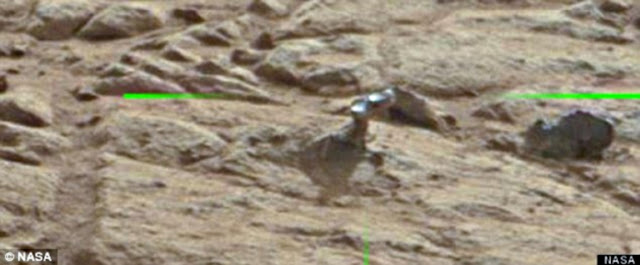

Probably one of the animal familiars that the chrononauts had to leave behind when martian golems were finally put to sleep.
Insane Metal
Member
Was that conclusion released by any source?
Yes, NASA. http://www.nasa.gov/mission_pages/msl/news/msl20130211.html









